Lockheed XFV: The tail-sitting Navy fighter that wasn’t to be
- By Alex Hollings
Share This Article
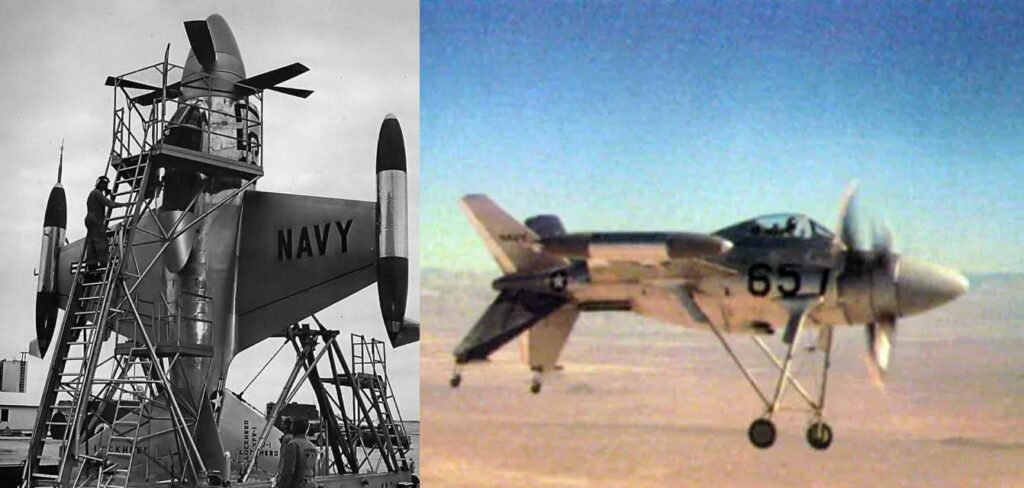
Nearly two decades before the Harrier jump jet would prove the efficacy of vertical take-off and landing platforms, the U.S. Navy considered taking another approach to fielding fighters without a runway in the Lockheed XFV.
In the years immediately following World War II, the United States found itself trying to adapt its newfound airpower to a world with nuclear weapons in it. America knew its monopoly on atomic bombs wouldn’t last forever, and by the mid-1940s, it seemed clear that the Soviet Union would eventually become the planet’s second nuclear power. By 1949, the Soviets joined the U.S. in the elite fraternity of nuclear nations.

For some time, nuclear war seemed not only possible, but even likely, as the two nations postured for territory and prestige. Within some defense circles, the question really wasn’t if a nuclear war would break out… but when.
While America’s politicians largely saw the concept of nuclear war as the end state of a diplomatic failure, America’s military leaders were stuck in the unenviable position of having to plan to fight and win such a war. That meant finding ways to stay in the fight after the first nukes made landfall, and one way that manifested in a number of military aircraft development programs was the concept of VTOL, or Vertical Take-Off and Landing.
Pentagon brass believed airstrips would be among the first targets of a Soviet nuclear attack. If they were right and the U.S. couldn’t count on having airstrips positioned around the globe to support combat operations, they needed a new fighter that could take off and land without the need for a well-manicured runway.
Related: Destroyer of Worlds: The state of the world’s nuclear arsenals
The Lockheed XFV “Salmon”
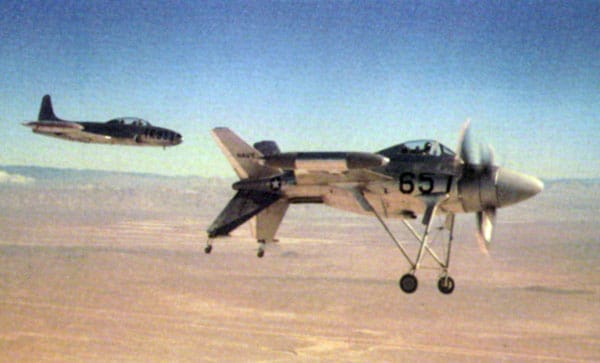
While the need for VTOL aircraft was seen all across the Pentagon, the Navy saw vertical take-off and landing platforms as an opportunity to deploy intercept fighters from non-aircraft carrier vessels. In fact, the Navy even considered launching VTOL fighters off of merchant ships in a new World War if necessary.
In June of 1951, Lockheed was awarded a Navy contract to build the XFV-1; a prototype fighter with traditional wings, a massive reinforced X-shaped tail, and a 5,850 horsepower turboprop engine spinning a pair of three-bladed contra-rotating propellers that made the aircraft look like the bastard child of a helicopter and a prop-driven fighter. Most unusual of all, the aircraft was designed to take off and land on its tail, with its nose pointed straight up in the air.
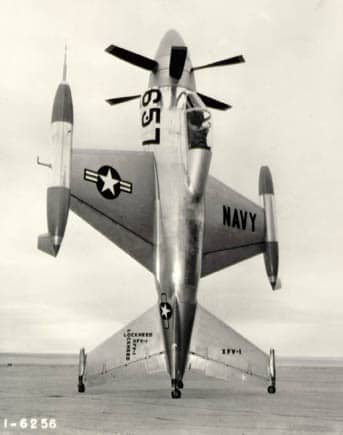
Lockheed called on famed aviation pioneer Kelly Johnson to design their VTOL XFV, and one could have argued at the time that the program couldn’t have been placed in better hands. Johnson was just coming off of the development of the P-38 Lightning and then America’s first jet fighter, the P-80 Shooting Star. His long and storied career as an aeronautical engineer eventually included overseeing first of their kind platforms like the U-2 Spy Plane, the SR-71 Blackbird, and the F-117 Nighthawk.
For testing, the XFV-1 was fitted with an awkward-looking set of landing gear, which included mounting wheels on the bottom of the lower tail wings. In December of 1953, the XFV-1 got its first taste of the sky when Chief Test Pilot Herman ‘Fish’ Salmon managed to make the aircraft “hop” briefly during taxiing tests. Less than a year later, in June of 1954, it would make it all the way into the sky for its first real flight.
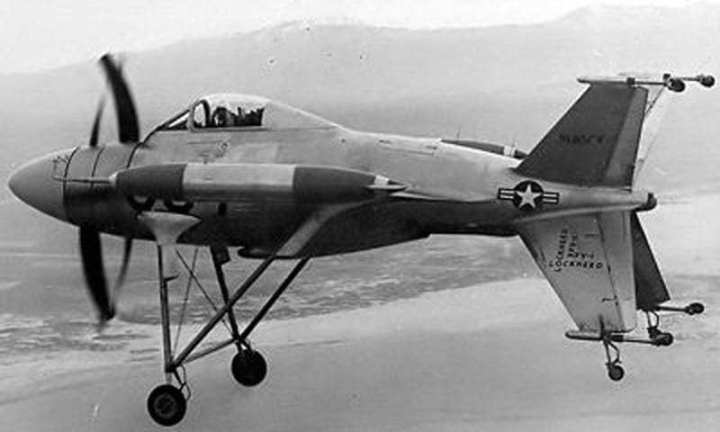
Related: Kelly Johnson: How one man changed aviation forever
Unfortunately, the Allison YT40-A-6 turboprop engine installed on the prototype was not powerful enough to manage actual vertical take-offs or landings. Instead, Lockheed planned to use the forthcoming (and more powerful) Allison T54 engine, which would produce 7,100 horsepower, but issues with the engine’s development meant the XFV’s desperately needed power plant would never arrive.

The prototype XFV-1 did make a total of 32 brief flights and even managed to hover with its nose up for a short period of time, but never accomplished a single vertical take-off or landing.
Read more from Sandboxx News
Related Posts
Sandboxx News Merch
-

‘AirPower’ Classic Hoodie
$46.00 – $48.00 Select options This product has multiple variants. The options may be chosen on the product page -

‘Sandboxx News’ Trucker Cap
$27.00 Select options This product has multiple variants. The options may be chosen on the product page -

F-35 ‘Lightning’ Framed Poster
$45.00 – $111.00 Select options This product has multiple variants. The options may be chosen on the product page

Alex Hollings
Alex Hollings is a writer, dad, and Marine veteran.
Related to: Airpower
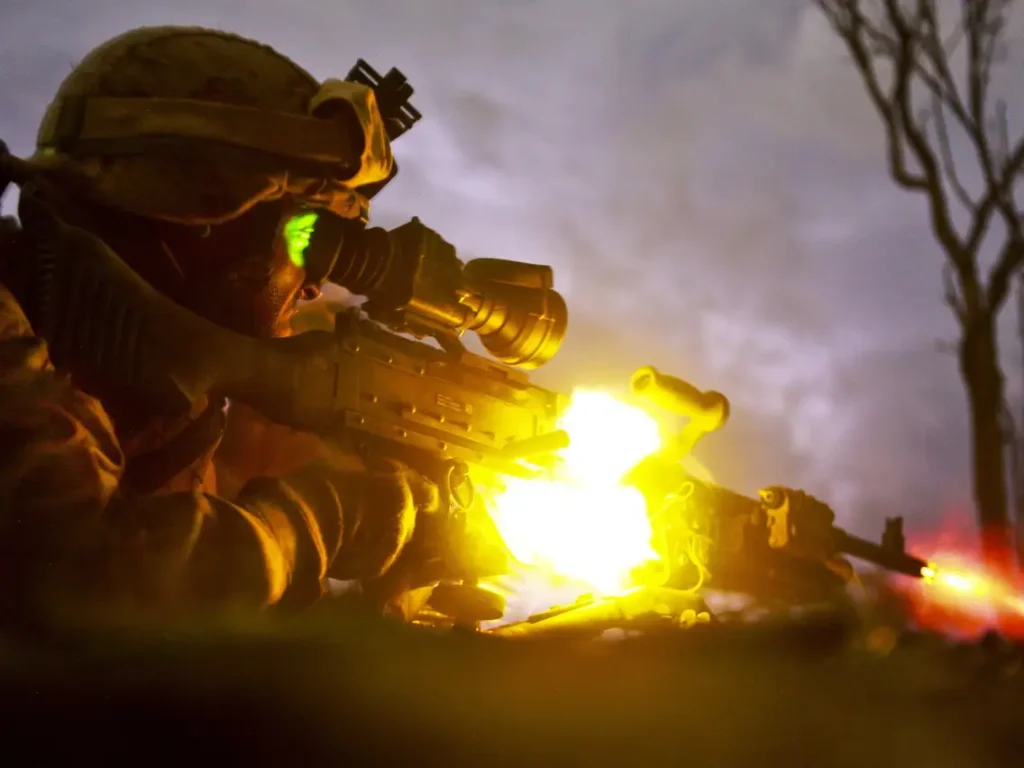
How US Special Forces took on Wagner Group mercenaries in an intense 4-hour battle
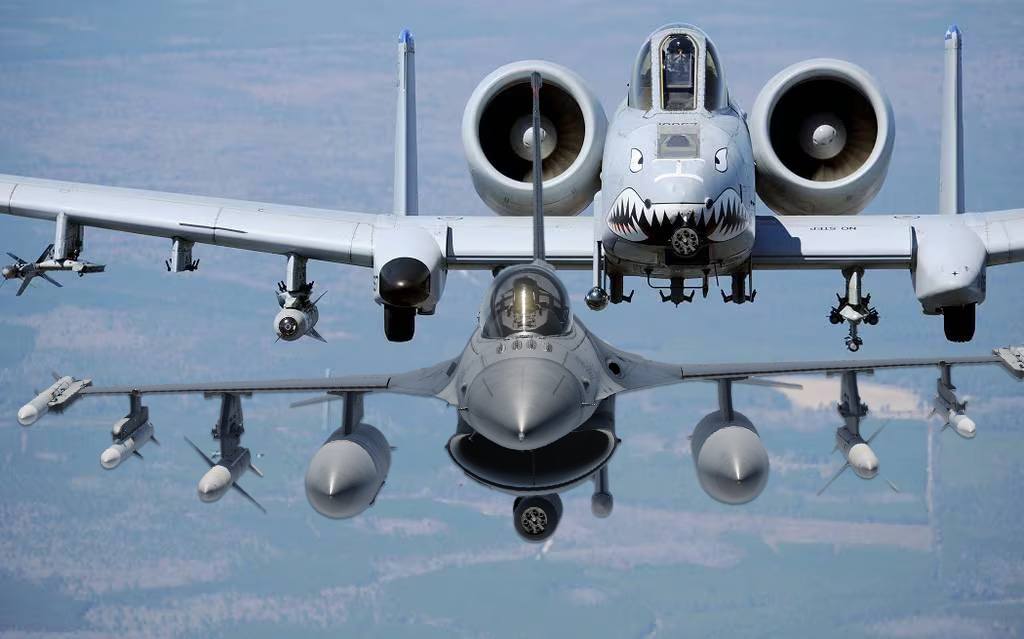
F-16s carrying the A-10’s 30mm cannon actually saw combat
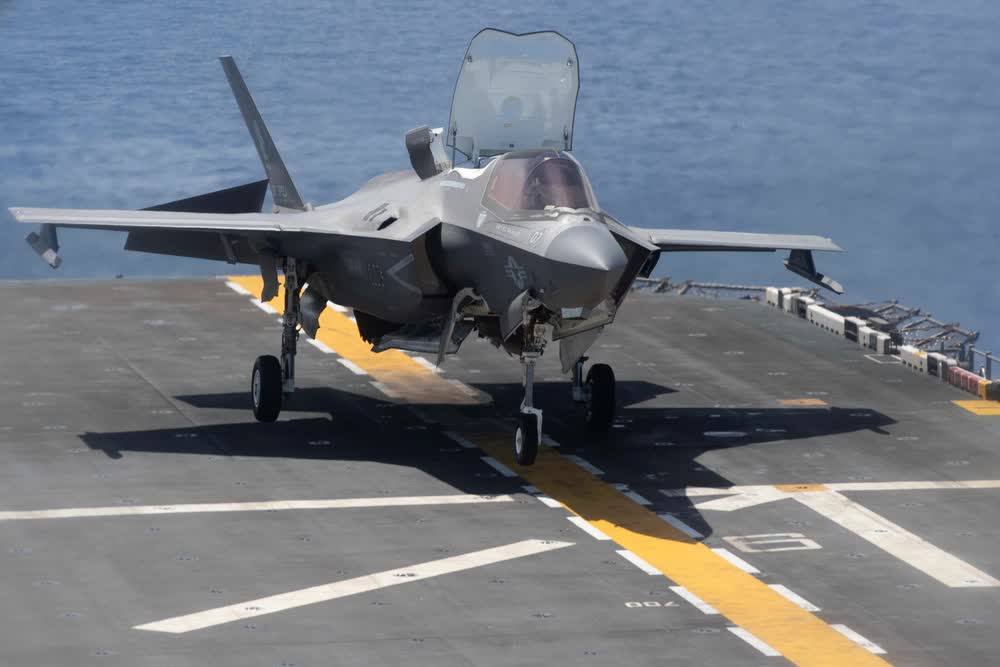
With NGAD uncertain, will America’s next air superiority fighter be the F-35?

Drone mystery solved? This little-known government program may explain New Jersey’s drone sightings
Sandboxx News
-

‘Sandboxx News’ Trucker Cap
$27.00 Select options This product has multiple variants. The options may be chosen on the product page -

‘AirPower’ Classic Hoodie
$46.00 – $48.00 Select options This product has multiple variants. The options may be chosen on the product page -

‘AirPower’ Golf Rope Hat
$31.00 Select options This product has multiple variants. The options may be chosen on the product page -

‘Sandboxx News’ Dad Hat
$27.00 Select options This product has multiple variants. The options may be chosen on the product page
